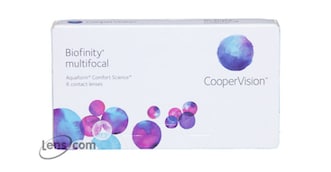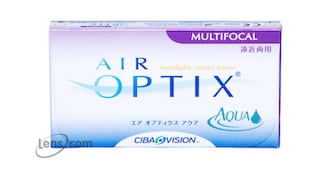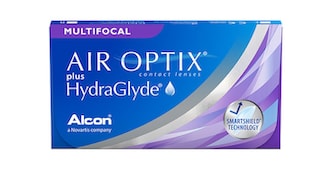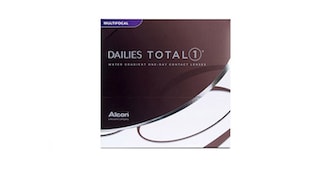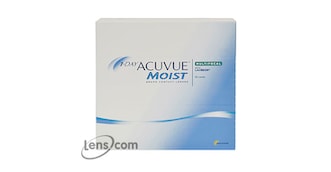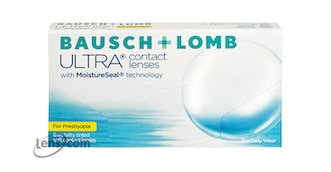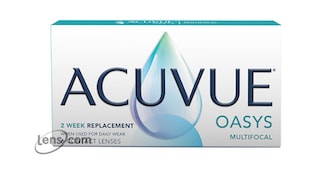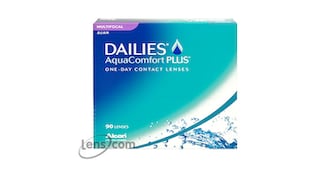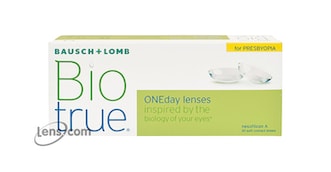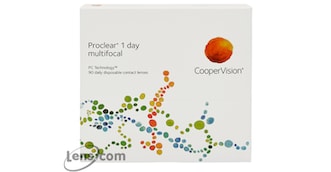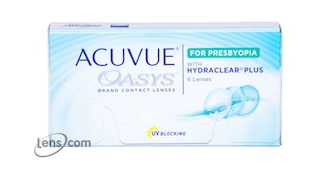Contact Lenses for Presbyopia
Multifocal contact lenses are contact lenses designed for people with presbyopia — an age-related condition that makes nearby objects appear blurry. Multifocal contact lenses feature two or more lens powers to target vision at varying distances from the wearer.
| Most Popular Contact Lenses for Presbyopia Contact Lenses | |||
|---|---|---|---|
| All Contact Lenses for Presbyopia Contact Lenses | |||
|---|---|---|---|
| Contact Lenses for Presbyopia Contact Lenses With Rebates | |||
|---|---|---|---|
See All Available Contact Lenses for Presbyopia Rebates
| Rebates for Order Amounts | |||
|---|---|---|---|
| Contact Lenses for Presbyopia Brand Products | 4 Boxes | 8 Boxes | |
| 1-Day Acuvue Moist Multifocal 30 Pack | $75 | -- | |
| 1-Day Acuvue Moist Multifocal 90 Pack | -- | $180 | |
| Acuvue Oasys 2-week Multifocal | -- | $160 | |
| Acuvue Oasys for Presbyopia | $75 | -- | |
| Air Optix Aqua Multifocal | $95 | -- | |
| Air Optix plus HydraGlyde Multifocal | $75 | -- | |
| Biofinity Multifocal | $135 | -- | |
| Biotrue ONEday for Presbyopia | -- | $160 | |
| Dailies AquaComfort Plus Multifocal | -- | $220 | |
| Dailies Total 1 Multifocal | $85 | $180 | |
| Proclear 1 Day Multifocal | -- | $180 | |
| ULTRA for Presbyopia | $75 | -- | |
About Contact Lenses for Presbyopia Contacts
What is presbyopia?
Presbyopia is an age-related condition marked by the hardening of the lens of the eye. The lens is an important part of the eye’s anatomy as it allows the eye to focus on objects at varying distances.
When you’re young, the lens can easily change shape to focus on nearby and faraway objects because it’s still soft and flexible. As you age, however, the lens becomes more rigid and unable to change shape as easily as it once did. This makes it harder to do close-up work, like reading a book.
People with presbyopia will typically begin to notice this change in their vision sometime around the age of 40. From then on until about the age of 65, their vision will gradually get worse. Unfortunately, even those who have always had perfect vision are not exempt from developing presbyopia. It eventually catches up with everyone. In fact, experts estimate that almost two billion people worldwide have presbyopia.
Presbyopia is typically corrected with eyeglasses that have either progressive or bifocal lenses. Progressive lenses, also known as multifocal lenses, contain three distinct optical powers in each lens. These prescription strengths work synergistically to allow wearers to do close-up work (like reading a book), middle-distance work (like reading on a computer), and distance viewing (like driving) without having to use different eyeglasses. Progressive lenses are especially popular among presbyopia sufferers over the age of 40.
Bifocal lenses, on the other hand, have only two distinct optical powers in each lens. In a typical bifocal lens, a small portion in the lower part of the lens contains the power needed to correct near vision, while the rest of the lens contains the power needed to correct distance vision. Bifocal lenses provide a more limited range of vision for people with presbyopia compared to progressive lenses. Moreover, the transition between the two distinct optical powers in a bifocal lens isn’t very seamless. For these reasons, bifocal lenses are often prescribed for children and young adults with relatively minimal vision problems.
Today, multifocal contact lenses are also becoming an increasingly popular option among people with presbyopia.
Features of Contact Lenses for Presbyopia
Contact lenses for presbyopia have multiple prescriptions in one lens to target vision at varying distances from the wearer. These contacts come in two designs: simultaneous vision designs and segmented designs.
- Simultaneous vision designs - In contact lenses for presbyopia with a simultaneous vision design, different zones of the lens are designated for far and near vision. Depending on the object being viewed, the wearer determines which area/s of the lens provides the clearest vision.
There are two types of simultaneous vision designs, namely:
- Concentric - In a concentric lens, the distance power is in the center of the lens, and it’s surrounded by concentric rings of both near and distance powers. The central power is used for viewing distant objects, but concentric lenses with center-near designs also allow the wearer to see nearby objects clearly.
- Aspheric - In an aspheric lens, the distance or near power is in the center of the lens. That power gradually changes as you move away from the center.
- Segmented designs - Contact lenses for presbyopia with segmented designs are like bifocal eyeglasses in that they have distinct near and distance power zones. In most segmented contact lenses, the top of the lens is for distance vision and the bottom of the lens is for near vision. Segmented designs are also known as alternating or translating designs.
Contact lenses for presbyopia are available in both rigid gas-permeable (RGP) and soft lens materials. Soft lens materials, such as hydrogels and silicone hydrogels, easily conform to the surface of the eye. As such, soft contacts are very comfortable to wear. They also allow plenty of nourishing oxygen to pass through the lens and into the eye to keep it moist, clear, and healthy.
Soft contact lenses for presbyopia also come in different modalities to fit different types of lifestyles. For example, daily disposables are ideal for people with presbyopia who don’t enjoy the hassle of a lens care routine. Meanwhile, contacts approved for overnight or extended wear are best suited for people who need a flexible wearing schedule.
On the other hand, contact lenses for presbyopia made of RGP materials stay in place better provide clearer vision than soft contacts. The only downside to contact lenses for presbyopia made of RGP materials is they’re not immediately comfortable upon insertion. For most people, adjusting to RGP contacts, multifocal or not, is a lengthy process that can take several weeks.
Popular Contact Lenses for Presbyopia
Leading contact lens manufacturers carry several popular options for people with presbyopia. Bausch + Lomb, for example, carries ULTRA for Presbyopia. These multifocal contacts feature advanced MoistureSeal technology, which maintains 95% of lens moisture for a full 16 hours. Other popular multifocal offerings from Bausch + Lomb include SofLens Multi-Focal, PureVision Multi-Focal, and Biotrue ONEday for Presbyopia.
CooperVision, one of the biggest contact lens manufacturers in the world, has Proclear Multifocal. These contacts have been shown to improve lens-related dryness and discomfort. CooperVision's Biofinity Multifocal contacts also help people with presbyopia see clearly up close, far away, and at every distance in between.
Meanwhile, Johnson & Johnson, a trusted name in eye care products, carries Acuvue Oasys for Presbyopia. These multifocal contacts allow people with presbyopia to see nearby objects clearly, even in low light conditions. Johnson & Johnson also has 1-Day Acuvue Moist Multifocal contacts for people with presbyopia who prefer daily disposable lenses.
Schedule a visit with your eye care professional to discuss your options.
How Much Are Contact Lenses for Presbyopia?
Soft contact lenses for presbyopia retail for $50 to $65 per box of six lenses, with each box lasting six months. If you replace your contacts every month, expect an annual lens cost of $200 to $260. The actual figure may be lower or higher depending on how often you replace your contacts.
If your contacts are RGP lenses, expect to pay about $100 per lens. But don’t fret. Each lens can last at least a year before it needs to be replaced. As such, a yearly supply of RGP contact lenses for presbyopia will cost you at least $200.
How to Insert and Remove Contact Lenses for Presbyopia
For soft contacts:
Start by washing and drying your hands with mild soap and water, then dry them with a lint-free towel. Scoop your first lens out of the case with your index finger of your dominant hand and rinse it with a cleaning solution that’s specially formulated for soft contacts. Inspect the lens for any tears or debris and make sure it’s not inside-out. Using the middle finger of your dominant hand, pull down your lower eyelid. If necessary, use the middle finger of your non-dominant hand to pull your upper eyelid. Look upward and gently put the lens on your eye. Blink a few times to center the lens. Repeat this with the other lens.
To remove soft contact lenses for presbyopia, hold your eyelids open and gently pinch the lens between your index finger and thumb. Carefully lift the lens off of your eye. Repeat with the other lens.
For RGP contact lenses:
If your contacts are RGP lenses, follow the same steps for inserting soft contacts. Don’t panic if they don’t feel comfortable as soon as you put them in. RGP lenses have an adjustment period, but regular use is key for comfort. If you don’t wear your RGP contacts for several days, they may not feel comfortable right away when you put them in again. Try to be consistent with regards to how often and how long you wear them.
To remove RGP contact lenses for presbyopia, start by washing and drying your hands. For your left eye, place the index finger of your left hand at the corner of your eye and place your right hand below your eye. Stare hard at your right hand, then use your left index finger to pull your eyelid towards your ear. Blink, and the lens should easily pop out of your eye. Repeat these steps to remove the other lens.
About Lens.com
Lens.com has been proudly offering high-quality contact lenses at discount prices since 1995. Choose from a variety of our contact lenses for presbyopia and enjoy hassle-free returns, quick shipping, and a 100% money-back satisfaction guarantee.
